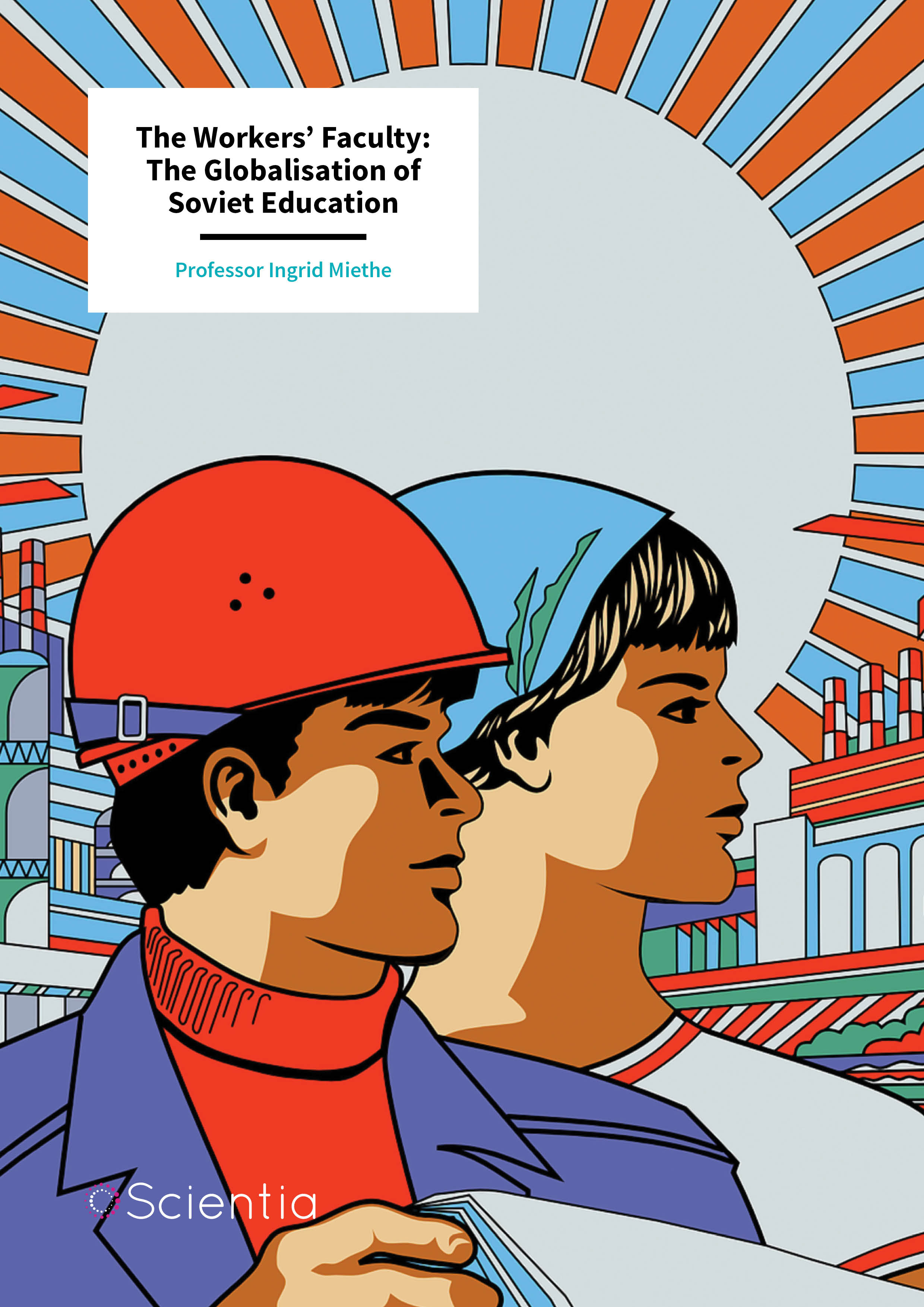Professor Ingrid Miethe – The Workers’ Faculty: The Globalisation of Soviet Education
The borrowing and lending of educational models between nations has a long and interesting history. However, much of modern literature focuses on transfers between capitalist societies. Professor Ingrid Miethe of the University of Gießen studies the global transfer of socialist educational institutions, specifically the adaptations of the Soviet Russian Workers’ Faculty – an institution newly founded to educate the working-class population for a more egalitarian society.
The Workers’ Faculty
Throughout history, a core component of socialist countries has been the elevation of working-class and peasant populations through the elimination of inequalities in opportunity. One of the greatest barriers to opportunity is lack of access to quality education. Education opens up career paths and potential for advancement in society. However, in many societies, access to education is limited to the affluent and upper class. Consequently, education for the masses has been an important focus in socialist countries. One of the unique contributions of the Soviet Union is the Workers’ Faculty, an educational acceleration institution for the working class.
Professor Ingrid Miethe of the University of Gießen in Germany studies the spread of Workers’ Faculties across the globe, particularly how these faculties have played into educational exchanges between socialist nations and how they developed in the context of unique cultures and varying global influences. In her new book, Globalisation of an Educational Idea: Workers’ Faculties in Eastern Germany, Vietnam, Cuba and Mozambique, Professor Miethe fills gaps in the research and history of this educational transfer.
The Origins of the Rabfak
The first version of Workers’ Faculties opened in Soviet Russia in 1919, shortly after the October Revolution. Called Rabfak, short for rabočij fakul’tet, these institutions were designed to quickly prepare peasants and workers for higher education. With the professed goal of removing educational inequalities due to class status, these facilities aimed to develop a new intellectual class in Russia, borne from humble roots. They served to create new opportunities for the working people while simultaneously insuring that this new intellectual class would be loyal to the communist government and promote the socialist cause. Workers’ Faculties continued to proliferate in Russia and spread across other Soviet nations following the formation of the Soviet Union.
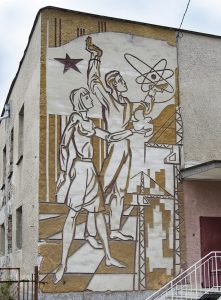 Following World War II, the Workers’ Faculties found new homes in socialist countries in Europe, with versions popping up in East Germany, Poland, Czechoslovakia, Romania, Bulgaria and Hungary. At the same time in Asia, the newly established independent nations of China, Vietnam and North Korea also began to adopt the Workers’ Faculty model. As socialist movements spread across the globe, Workers’ Faculties followed, finding their way to Mozambique and Cuba, the last country that – at least by name – still has operational faculties today.
Following World War II, the Workers’ Faculties found new homes in socialist countries in Europe, with versions popping up in East Germany, Poland, Czechoslovakia, Romania, Bulgaria and Hungary. At the same time in Asia, the newly established independent nations of China, Vietnam and North Korea also began to adopt the Workers’ Faculty model. As socialist movements spread across the globe, Workers’ Faculties followed, finding their way to Mozambique and Cuba, the last country that – at least by name – still has operational faculties today.
Creating Global Context
Professor Miethe’s work aims to illuminate the history and principles of educational exchange between socialist countries. Most studies of international educational exchanges and globalisation focus on capitalist countries. Meanwhile, reviews of educational transfer between socialist nations tend to be pairwise and lacking context as to how they fit into broader globalisation patterns. In her book, Professor Miethe creates a comprehensive picture of socialist educational transfers by illuminating exchanges between socialist countries across four continents. She focuses on the Workers’ Faculty due to its long history, from Soviet Russia to present-day Cuba, and its implementation in vastly different cultures and contexts.
Professor Miethe’s research seeks to explore three overarching questions. First, what national traditions and international transfers influenced how Workers’ Faculties were established and run in each culture? Second, how did the design of each culture’s Workers’ Faculty differ and what role did it play in each unique context? Third, what can Workers’ Faculties teach us about the history of international educational transfers and how do these transfers interplay with globalisation?
To offer answers, Professor Miethe’s book offers a broad history of Workers’ Faculties before diving into in-depth investigations of the emergence and progression of these faculties in countries on four continents: Germany in Europe, Vietnam in Asia, Mozambique in Africa, and Cuba in Latin America. She then ties these case studies together by discussing how each one fits into a larger context within the globalisation of education and spread of socialist ideals.
Defining the Workers’ Faculty
A critical component of studying and understanding the Workers’ Faculty is distinguishing it from other educational institutions. Though the original Rabfaks in Russia showed a great deal of variation in their implementation and structure, beyond all variety they and other Workers’ Faculties share some common traits.
First and foremost, the Workers’ Faculties emerged as a tool for social transformation following a revolutionary political change. Their mission was to aid transition to a socialist state through the creation of a more equal society. They were aimed primarily at peasants and the working class. While other groups that faced barriers to education, such as women and ethnic minorities, may also have benefited from the faculties, these target groups came second to economic categories.
The chief aim of the Workers’ Faculties across all national cultures was to provide an accelerated preparation for university coursework for the labour class. The curriculum was intended to level the playing field for people who were not offered educational opportunities during their regular school trajectory but were intent on gaining an education following the revolution. The faculties were integrated into universities as autonomous units, in a construction intended to underscore the prioritised standing of the working-class students within the university.
The final characteristic that differentiates Workers’ Faculties from other institutions was their objective and long-term goals. Their stated purpose was to support the social restructuring of higher education. This contributed to changing the student compositions of universities to the benefit of the socialist party. Ultimately, the goal was to nurture a new intellectual elite with a working-class background and strong loyalty to their socialist rulers.
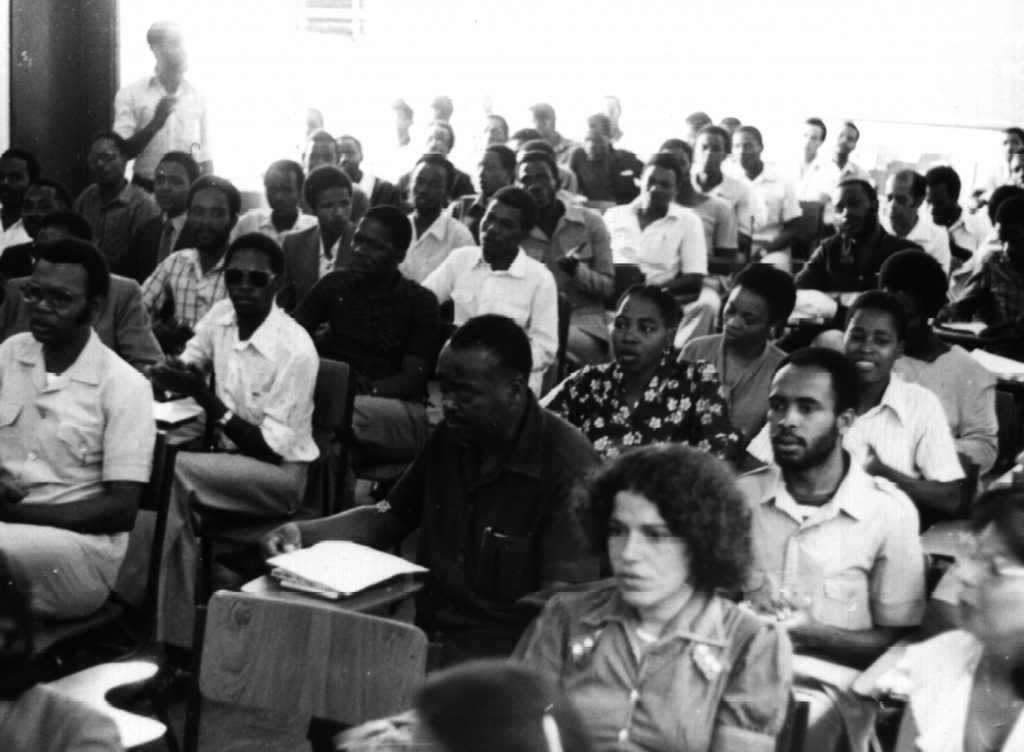
CREDIT: C. Wenske
Finding Hidden Details
Studying the global spread of Workers’ Faculties means dealing with complex issues. While their institutional history within the Soviet Union is fairly well documented, records of their dissemination to other countries around the world are rarely investigated. This is in large part due to the conditions under which a Workers’ Faculty would normally be initiated – following a revolution and major social upheaval. For short-lived regime changes, especially those that have not aged well in the eyes of history, this means that records may be sparse.
By sifting through thousands of documents in local languages, Professor Miethe identified the emergence of numerous Workers’ Facilities across Europe, Asia, Africa, and Latin America. This includes short-lived institutions that were run in many places from Poland following WWII to Afghanistan in the early 1980s.
For her deep case study, Professor Miethe chose a Workers’ Faculty on each of the four continents that she knew she could obtain sufficient data on. She then dived into finding every record possible. The bedrock of the study consisted of primary source research in the various national archives. This was supplemented by eyewitness interviews. Professor Miethe and her team found only very limited academic documentation on the Workers’ Faculties in the various countries, although they found some ‘grey literature’ in the local languages. These newspaper articles, university reports, government publications and other non-academic material produced during the programs’ existence helped the team to fill out additional details about the programs and the cultural climate surrounding them.
German Tradition and Soviet Means
Following WWII, Soviet-occupied East Germany saw the rise of worker education modelled after the Russian Rabfak. These programs met Professor Miethe’s qualifications for classification as Workers’ Faculties. The movement started with the 1945 formation of preliminary study divisions, Vorstudienabteilungen (VA), designed to help peasants and their children start down the path to higher education. While the VA took many notes from Soviet Rabfak models, it was also based heavily in German traditions of providing auxiliary courses for workers, and some were not directly associated with universities. Furthermore, implementation was inconsistent across the occupied area.
In 1949, in an effort to consolidate approaches, the VA were converted to Workers’ and Peasants’ Faculties, Arbeiter- und Bauern-Fakultäten (ABF). The ABF were clearly modelled on the Russian Rabfak, with integration into the university system and direct references to the Soviet institutions appearing in documents about the design of the faculties. While attendance was high in the first four years, it began to wane in the mid-1950s. Due to high drop-out rates, the programs were eventually modified to create more specialised paths. As the political motives of the ABF were secured in the late 1950s, the majority of ABFs were shut down by 1963.
Professor Miethe concludes that both Soviet and German traditions played into the formation of Workers’ Faculties in East Germany, and the Soviet model was pulled upon more heavily for the politically motivated ABF. Soviet occupation of the region assisted in the transfer of educational structure to East Germany.
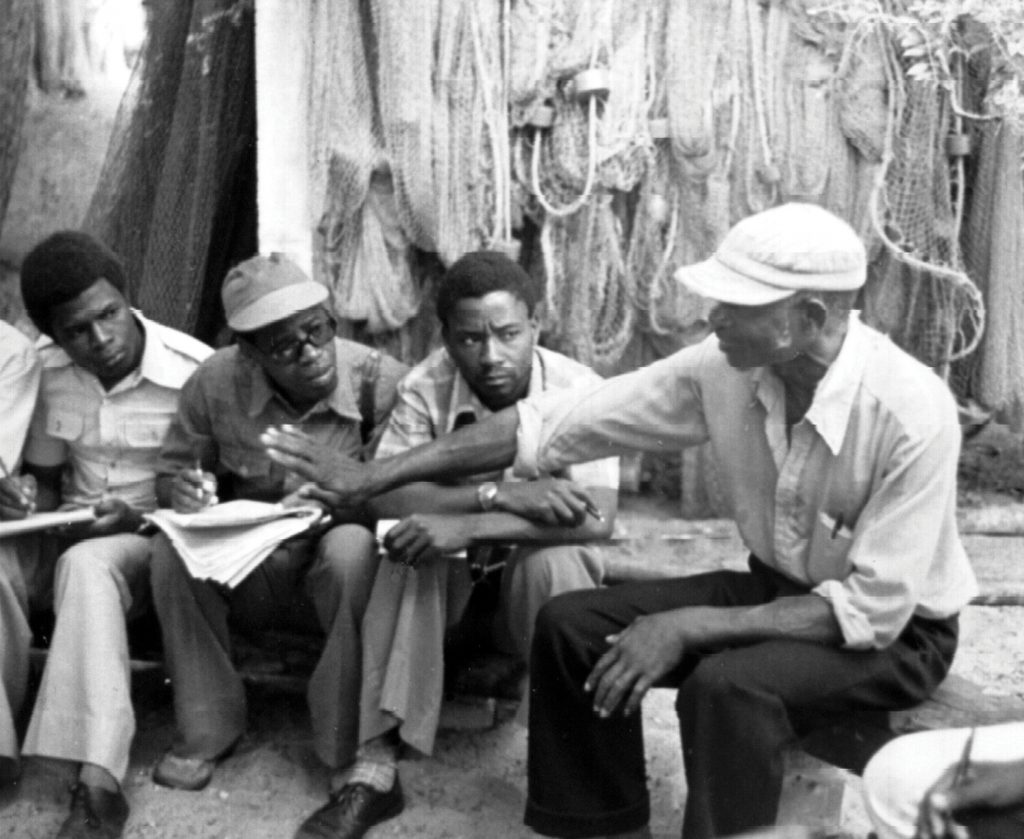
CREDIT: C. Wenske
The Vietnamese Adaptation of the Workers’ Faculty
Following the defeat of the French colonial administration in 1954, a newly independent Vietnam struggled to obtain political stability. North Vietnam desired a communist state modelled on those of the Soviet Union and China. A small group of Vietnamese leaders had spent time in Soviet Russia and participated in the Rabfak system. Inspired by the programs to empower the working class through education, these leaders cited the Soviet system in the formation of the Central Worker-Peasant Complementary Education School (CWPS).
Though the CWPS was sparked by Soviet Rabfaks, the school itself was modelled more closely upon institutions in neighbouring China and was an independent school, not associated with a university. This decision fit organically with the existing education system in Vietnam and represents a culture-specific modification of the Workers’ Faculty model.
Despite this difference, the goals of the CWPS was aligned with that of the Soviet Rabfak. The school was meant to educate workers to both achieve educational equality and create a population of educated workers suitable for state level positions. While these efforts were successful in Hanoi, it had less impact in rural regions of Vietnam, where most of the working class resided. Ultimately, the program was shut down in 1964.
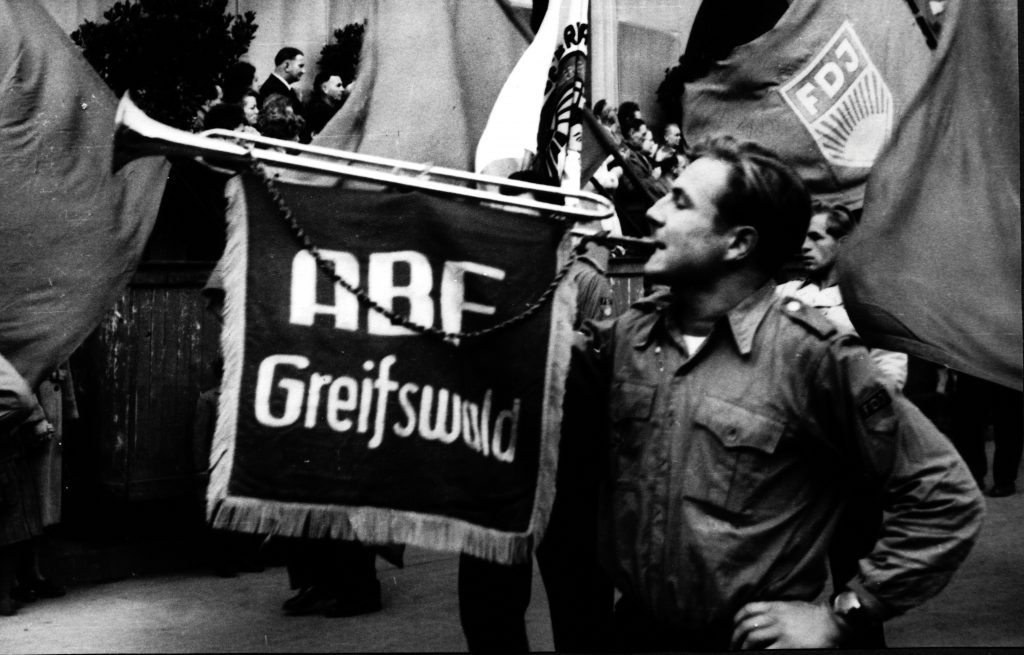
CREDIT: University archive Greifswald
Indirect Transmission in Mozambique
After a decade-long struggle for independence from the Portuguese, the People’s Republic of Mozambique was formed in 1975. However, efforts to educate the peasant population started well prior to independence. Based in exile in Tanzania, leaders of the Mozambique Liberation Front, Frente para a Libertação de Moçambique (FRELIMO), planned the reclamation of their country. As rebellion leaders began liberating portions of the country in 1965, FRELIMO schools were formed in these liberated zones to provide foundational educational for independence fighters and their children.
Nevertheless, at the time of independence, the vast majority of the population was illiterate. Upon independence, the Portuguese educated elite left the country in droves. Since only an insignificant minority of attendees in Mozambique universities were Mozambican, the country was left with few capable of teaching the newly freed population. In 1977, FRELIMO leadership formally aligned itself with the socialist bloc and began developing connections with socialist countries. This led to advisors from these countries, particularly East Germany, traveling to Mozambique to both aid in structuring a socialist government and serving as educators, providing courses for workers.
In cooperation with foreign educators, FRELIMO began pursuing the goal of forming a Faculty for Former Combatants and Vanguard Workers, Faculdade para Antigos Combatentes e Trabalhadores de Vanguarda (FACOTRAV). This initiative was consistent with FRELIMO’s own experience to educate independence fighters and matched the party’s socialist outlook. However, at the time when foreign educational advisors arrived, civil war broke out in Mozambique. Despite the restrictive budgetary conditions created by the war, the FACOTRAV was founded as a new university faculty in 1983, clearly shaped in accordance with the ABF model brought into discussion by the East German advisors.
The program lasted through 1990 with diminishing participation and was eventually abandoned with socialist political motivation. Though the FACOTRAV highly resembled the Rabfak system in both structure and motivation, these features were acquired indirectly through contact with East German educators associated with the ABF program.

CREDIT: Landeshauptarchiv Schwerin Best. 10.34-1 Nr. 503
Educational Inspiration in Cuba
The Cuban Workers’ Faculty represents a unique institution when compared to the other case studies in Professor Miethe’s work, since there were two main types. After the Cuban revolution of 1959, the country became increasingly in conflict with the United States and from 1961, officially began orienting itself towards socialist ideals and the USSR.
Though a well-developed education system existed in Cuba at the time of the revolution, it was highly class-divided. The emergence of the new government led to sweeping educational initiatives which quickly raised literacy rates and brought broad education to a wider range of Cubans. In 1962, university reform sought three major goals: making university education accessible to all members of the population, raising its quality, and forming tight connections with the new socialist government. However, much of the adult working population lacked education beyond basic literacy. To truly realise these goals, additional programs would be needed.
Though concepts for a university of the people already existed in Cuban culture and history, once formally aligned with socialist regimes, the Cuban government expressed explicit interest in developing a Rabfak-style program for the education of adult workers. The Workers’ and Peasants’ Preparatory Faculty, Facultad Preparatoria Obrera y Campesina (FPOC), was founded with the Rabfak model in mind, with the aim of securing political power within the universities. These Workers’ Faculties served to close the educational gap between classes in Cuba and eventually led to the formation of the V.I. Lenin Special School, an elite school for FPOC graduates. These educational institutions are still operational today, but they have changed their character to rather regular adult education centres.
A Complex Tale
Professor Miethe’s work demonstrates the complex influences that shape how educational institutions and ideas are shared and adopted across cultures. While each of these cases took inspiration from the Soviet Rabfak, whether directly or indirectly, their implementations shifted to build upon existing institutions and were each unique by nature of their cultural context and political goals.
Meet the researcher

Professor Ingrid Miethe
Department of Educational Science
University of Gießen
Gießen
Germany
Professor Ingrid Miethe began her career studying Education, Political Science and Sociology at the Technical University Berlin and a PhD in Political Science from the Free University Berlin. She obtained her venia legend in education at University Halle-Wittenberg. She served as a Professor of General Education at the Protestant University of Applied Science Darmstadt for eight years before joining the faculty of Education at the Department for Social Science and Cultural Studies at the University of Giessen as a Full Professor in 2010. She is a member of many professional organisations, including the International Sociological Association and she is Vice President of the German Educational Research Association. Professor Miethe’s present work focuses on the history and transformation of Workers’ Faculty and on educational transfers between the Socialist bloc and countries of the Global South.
CONTACT
E: ingrid.miethe@erziehung.uni-giessen.de
W: http://www.uni-giessen.de/fbz/fb03/institute/ifezw/prof/allgemeine/team/ingridmiethe
KEY COLLABORATORS
Dr Tim Kaiser, Research Administrator, Teacher Training College Weingarten
Dr Tobias Kriele, Educational Assistant, University of Gießen
Alexandra Piepiorka, Research Assistant, University of Gießen
FUNDING
Deutsche Forschungsgemeinschaft (German Research Foundation)
FURTHER READING
I Miethe, T Kaiser, T Kriele, A Piepiorka, Globalisation of an Educational Idea: Workers’ Faculties in Eastern Germany, Vietnam, Cuba and Mozambique, De Gruyter Oldenbourg, 2019.


